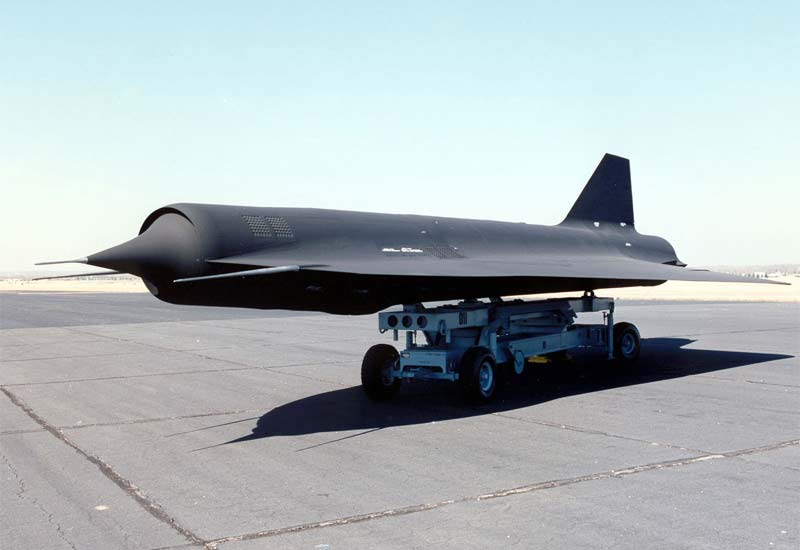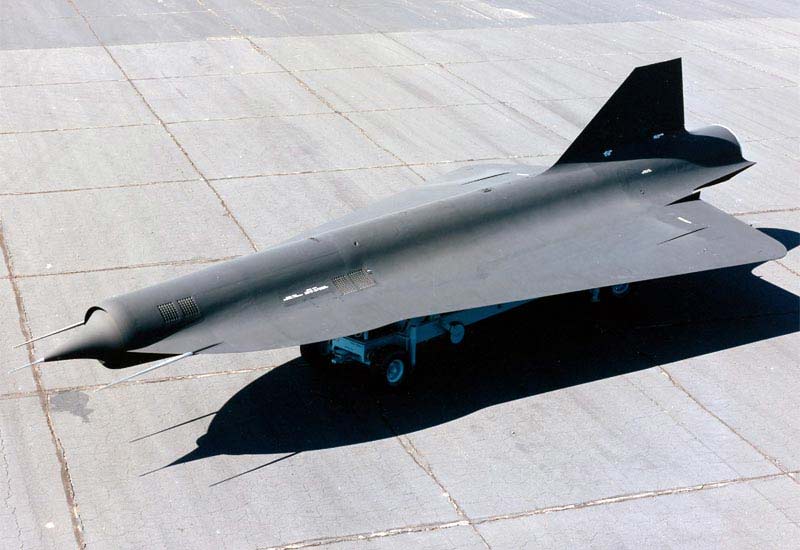The Lockheed D-21 was an unmanned, high-speed, high-altitude reconnaissance drone, initially designed to be launched from the M-21 carrier aircraft.
In brief
The Lockheed D-21 was an American reconnaissance drone, developed in the 1960s for long-range, high-altitude surveillance. Capable of Mach 3+ speeds and operating at altitudes above 85,000 feet, the drone was designed to be initially launched from the back of the M-21, a variant of the A-12 aircraft. It was equipped with a sophisticated camera system to capture high-resolution imagery over hostile territories without risking pilot lives. The D-21 was propelled by a Marquardt RJ43-MA-11 ramjet engine and followed a pre-programmed flight path before ejecting its camera payload for retrieval, after which the drone would self-destruct.

History of the Development of the Lockheed D-21
In the context of the Cold War, the U.S. sought advanced reconnaissance capabilities to safely gather intelligence over the Soviet Union and other hostile territories. The development of the Lockheed D-21, initiated by Lockheed’s Skunk Works division, aimed to complement and eventually replace manned U-2 and A-12 reconnaissance aircraft, minimizing the risk to pilots and the potential for international incidents, as evidenced by the 1960 U-2 incident.
The program, codenamed “Tagboard,” began in the early 1960s, with the D-21 making its first flight on December 22, 1964. The drone was initially designed to be launched from the M-21, a modified version of the A-12. However, after a fatal accident during a launch in 1966, the program shifted to a B-52H Stratofortress as the launch platform, leading to the D-21B variant. The D-21 was a strategic asset developed during a period when aerial surveillance technology was rapidly evolving, yet the need for reliable intelligence gathering remained constant.
Design of the Lockheed D-21
The Lockheed D-21 featured an innovative design optimized for high-speed, high-altitude, unmanned flight. Its airframe was constructed from titanium and other high-temperature alloys, enabling it to withstand the frictional heating generated at Mach 3 speeds. The drone utilized an inertial navigation system to follow a pre-determined flight path, ensuring precise overflight of target areas.
The absence of a traditional landing gear system, the inclusion of a ramjet engine, and the requirement for mid-air launch presented unique design challenges. The D-21 was equipped with a Marquardt RJ43-MA-11 ramjet that operated efficiently at high altitudes and speeds, contributing to its remarkable performance. The drone carried no self-defense mechanisms, relying on its speed and altitude to evade enemy defenses.
Performance of the Lockheed D-21
The D-21 was capable of speeds in excess of Mach 3, cruising at altitudes up to 95,000 feet, which enabled it to perform reconnaissance missions without detection or interception. Its range extended up to 3,000 nautical miles, and the onboard camera system was capable of capturing high-resolution imagery of vast geographic expanses in a single mission.
Despite its advanced capabilities, the D-21 faced operational challenges, including difficulties in payload recovery, navigation errors, and limitations in real-time data transmission. Its performance in test flights and operational missions demonstrated the potential of high-speed, high-altitude drones, although the technology of the era could not fully exploit this potential.
Variants of the Lockheed D-21
The D-21 underwent several modifications, resulting in two main variants:
- D-21 (Tagboard): Launched from the M-21 carrier aircraft, a variant of the A-12, which was part of the initial design but was discontinued after a fatal accident.
- D-21B: Modified to be launched from a B-52H Stratofortress, incorporating changes to improve reliability and operational safety following the termination of the M-21 launch program.

Military Use and Combat of the Lockheed D-21
The D-21 was deployed in a few operational missions over China to gather intelligence on nuclear facilities and missile sites. However, the program was relatively short-lived, with only a handful of missions flown before it was terminated in the early 1970s. The reasons included operational challenges, concerns over the potential for international incidents, and advances in satellite reconnaissance that offered safer and more versatile surveillance options.
While the D-21 did not see extensive combat use, its development and missions contributed valuable lessons in the design and utilization of unmanned reconnaissance platforms. The drone’s reconnaissance missions, though limited, showcased the strategic value of high-altitude, high-speed surveillance in a period marked by rapid technological advancements and escalating Cold War tensions.
–
The Lockheed D-21 represents a significantmilestone in the evolution of unmanned aerial vehicles, particularly in the realm of high-altitude, high-speed reconnaissance. Its development was a testament to the cutting-edge aerospace engineering of its time, pushing the boundaries of what was possible in terms of speed, altitude, and operational stealth.
The D-21’s innovative design, characterized by its ramjet engine and sophisticated navigation system, laid foundational technologies for future reconnaissance platforms and unmanned aerial vehicles. While its operational history was brief and met with mixed success, the lessons learned from the D-21 program significantly influenced the development of subsequent UAVs and reconnaissance technologies, underscoring the importance of unmanned systems in modern aerial surveillance and intelligence gathering.
The termination of the D-21 program reflected not only the technological challenges and operational risks associated with such advanced platforms but also the broader strategic shift towards satellite reconnaissance, which offered global coverage, reduced risk of geopolitical incidents, and increasingly high-resolution imagery. However, the legacy of the D-21 endures, highlighting the enduring quest for strategic advantage through superior technology and the continuous evolution of unmanned systems in the aerospace defense sector.
Back to the Drones, UAVs, UCAVs page